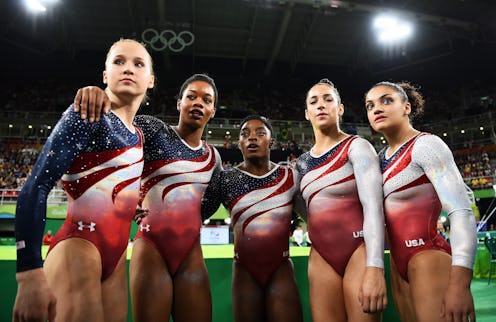News
Why The Hell Did It Take So Long For Everyone At USA Gymnastics To Get Fired?

Not since the Catholic Church sex abuse scandal has there been a systematic failure as wrenching and traumatic as USA Gymnastics'. Under the governing body's watch, at least 150 young women were sexually abused over a period of almost 20 years by then-USA Gymnastics doctor Larry Nassar, who was sentenced Wednesday. "For so long, [USA Gymnastics] put medals, reputation and money over the safety of athletes," Aly Raisman told NBC Thursday. (Bustle has reached out to USA Gymnastics for a statement, but has not yet received a response. In a statement addressed to the IOC, the body said that it "supported an independent investigation" into its actions.)
Yet, until last week — two decades after Nassar's abuse began; five years after a USA Gymnastics official admitted the organization regularly dismissed warning signs; a whole 18 months after the case became public — most of USA Gymnastics' board of directors still had their jobs. Rather than being fired, all members were "asked to resign" this week and appoint replacements.
Put simply, even Nassar had to face the consequences of his actions before the USA Gymnastics board was forced to.
To say this is egregious wouldn't begin to cover it. Considering what we now know about the years of secrecy and hundreds of young victims (who testified to several failed suicide attempts and one successful one), it's clear that Nassar was bolstered by the governing body's failure to penalize him in any way.
Yet, USA Gymnastics has fought against meaningful change every step of the way — from the allegations it "dismissed" and the statistics it refused to hand out all the way until the present day, with USA Gymnastics' painfully delayed decision to ask its board to resign. It's anybody's guess why it waited this long, but public interest in the Nassar scandal has never been higher than in the past week.
According to The Indianapolis Star, which published a breathtaking exposé of USA Gymnastics' role in sex abuse in late 2016, an official for the governing body testified in a 2013 sex assault case that USA Gymnastics tended to look the other way when allegations came from anyone but a victim or their families. (This, as the Indy Star points out, is against all legal and practical recommendations.)
The newspaper also found several examples of USA Gymnastics failing to investigate claims of abuse — examples the paper found "even without access to [any complaint dossiers]," it wrote. The coaches accused, the paper found, went on to abuse others as well. These coaches did not even include Nassar.
Few of these details have been contested by USA Gymnastics. (In a statement to the Indy Star at the time, it said only that the body "has a long and proactive history of developing policy to protect its athletes.") Yet, very little reform has actually been implemented. When it has been, as with USA Gymnastics' call for mass resignations, it has been left until the last possible moment.
Raisman, one of Nassar's hundreds of victims and arguably the most high-profile, has been vocal about the scale of the issue. "This is bigger than Larry Nassar," she insisted in a TODAY interview Thursday. She also said that USA Gymnastics had not contacted her since the sentencing — which is actually an improvement on its response to one of Raisman's fellow gymnasts, McKayla Maroney. As part of her settlement with USA Gymnastics after she claimed she had been abused, Maroney would have been fined $100,000 if she were to speak at Nassar's sentencing.
It's worth asking whether everybody who undermined and ignored the survivors until now did so, in part, because they were girls and young women. Even the reckoning into USA Gymnastics flew relatively under the radar until the apex of Nassar's trial — years after the abuse became public knowledge. Were it not for a judge who broke with protocol to give survivors a public platform, and the sheer number of brave women who spoke up along the way, many people would never have heard the grisly details of the scandal at all.
That judge, Rosemarie Aquilina, also became the target of sexist criticism for her scathing condemnation of Nassar. Aquilina's move to allow women who had been abused by Nassar to address him directly was not only beneficial to their recovery, but also projected the case into the public spotlight. Her naked fury when speaking to Nassar — a man, lest we forget, who had been convicted of sex abuse long between Aquilina came into the picture — was described by some media commentators as unprofessional.
It will take years to expose the ways USA Gymnastics failed the women under its watch. It will take more years, perhaps, to lay bare the social dynamics that allowed systematic abuse at this scale to occur at the first place.
One thing, however, is clear: USA Gymnastics failed. It failed to protect young women, and it failed to listen to them when they spoke up. It failed to apologize for its errors, and it failed to made reparations to the women it let down. For this, the board of directors should have voluntarily resigned — or, hell, been fired; dismissed; anything! — a long, long time ago.
This perspective is reflective of the author's opinion, and is part of a larger, feminist discourse.